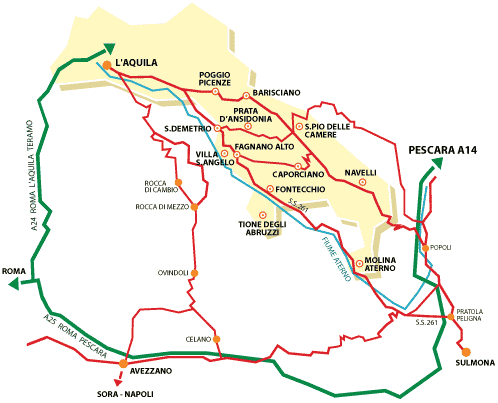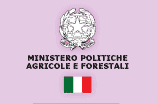

 Disciplinary
Production Areas
PDO Brand
Forms
Production and Processing
Working phases
The History of Saffron
Photogallery
Disciplinary
Production Areas
PDO Brand
Forms
Production and Processing
Working phases
The History of Saffron
Photogallery
The production zone of PDO saffron includes a clearly defined area in the Province
of L’Aquila with the towns
of Barisciano, Caporciano,
Fagnano Alto, Fontecchio,
L’Aquila, Molina Aterno,
Navelli, Poggio Picenze, Prata
d’Ansidonia, San Demetrio nei
Vestini, San Pio delle Camere,
Tione degli Abruzzi and Villa
Sant’Angelo.
The boundaries of the area are defi ned by the perimeters of these municipalities. Within this area cultivation must take place on lands lying at an altitude of between 350 and 1,000 metres above sea level.


The Abruzzo Region abounds in culinary traditions which differ according to the production areas. For instance, on the vast plateaux, like that of Navelli, the gastonomy is particularly characteristic with vegetables belonging to a local genotype: the lentils of Santo Stefano di Sessanio, which are very small and have such a thin skins that they do not need to be pre-soaked, the beans from Paganica, the red garlic from Sulmona, the saffron and chick peas from Navelli.
But it is mainly the saffron which has made a name for itself over time, imposing, distinguishable, especially thanks to the excellence of its fragrance in cooking.
Zafferano dell’Aquila is sold as such in Italy and Northern Europe thereby enhancing the fame of Abruzzo culinary art. For centuries saffron represented one of the traditional sources of employment and income for the hinterland on a par with sheep breeding and their transportation along the tratturo (sheep track) which runs from Abruzzo to Puglia, and the sale of wool.
The relaunching of saffron, the cultivation of which never completely died out thanks to the enthusiasm of the local people, must now implement a modern and wise policy of communication. Thanks to its well-known and undisputed qualities, saffron could act as a cohesive to promote the area and its gastronomy thereby favouring the fl ow of tourists.
In Italy in recent years various tourist itineries linked to the rediscovery of traditional fl avours and the culture of the area have come into being. Over 14 – 16 million tourists, more than half of whom are foreigners, travel these routes every year. These people visit Italy seeking local fl avours and typical products. It is therefore clear that as tourism evolves people want products which they relate to what they know about the area of origin. This also creates the premise for the re-emergence of unique forms of accommodation like country inns, farms and the courtyards.
The boundaries of the area are defi ned by the perimeters of these municipalities. Within this area cultivation must take place on lands lying at an altitude of between 350 and 1,000 metres above sea level.


The Abruzzo Region abounds in culinary traditions which differ according to the production areas. For instance, on the vast plateaux, like that of Navelli, the gastonomy is particularly characteristic with vegetables belonging to a local genotype: the lentils of Santo Stefano di Sessanio, which are very small and have such a thin skins that they do not need to be pre-soaked, the beans from Paganica, the red garlic from Sulmona, the saffron and chick peas from Navelli.
But it is mainly the saffron which has made a name for itself over time, imposing, distinguishable, especially thanks to the excellence of its fragrance in cooking.
Zafferano dell’Aquila is sold as such in Italy and Northern Europe thereby enhancing the fame of Abruzzo culinary art. For centuries saffron represented one of the traditional sources of employment and income for the hinterland on a par with sheep breeding and their transportation along the tratturo (sheep track) which runs from Abruzzo to Puglia, and the sale of wool.
The relaunching of saffron, the cultivation of which never completely died out thanks to the enthusiasm of the local people, must now implement a modern and wise policy of communication. Thanks to its well-known and undisputed qualities, saffron could act as a cohesive to promote the area and its gastronomy thereby favouring the fl ow of tourists.
In Italy in recent years various tourist itineries linked to the rediscovery of traditional fl avours and the culture of the area have come into being. Over 14 – 16 million tourists, more than half of whom are foreigners, travel these routes every year. These people visit Italy seeking local fl avours and typical products. It is therefore clear that as tourism evolves people want products which they relate to what they know about the area of origin. This also creates the premise for the re-emergence of unique forms of accommodation like country inns, farms and the courtyards.


















